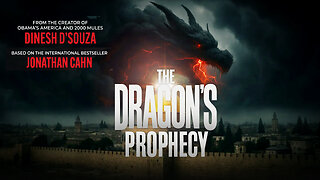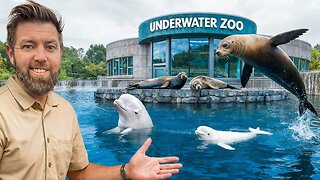Premium Only Content

Animation vs. Physics
"Animation" and "Physics" serve different purposes but often intersect, especially in areas like simulation, visual effects, and game development. Here's a comparison of the two, focusing on their nature, goals, and how they interact:
---
### 1. **Definition**
- **Animation**: The art and technique of creating the illusion of motion by displaying a sequence of images, drawings, or objects over time. It’s focused on storytelling, creativity, and visual expression.
- **Physics**: The scientific study of matter, energy, and the interactions between them. It provides the rules and laws that describe how objects and systems behave in the real world.
---
### 2. **Goal**
- **Animation**: Primarily aims to convey emotion, narrative, and aesthetic. It doesn’t always adhere to reality; exaggeration and stylistic choices are often embraced.
- **Physics**: Strives for accuracy in describing and predicting natural phenomena. It's about understanding the world objectively.
---
### 3. **Relationship**
- In **animation**, physics principles are often applied to create realistic motion and interactions, such as gravity, friction, and inertia. This is especially true in 3D animation, where software often incorporates physics engines to simulate realistic behavior.
- Example: Animating a bouncing ball requires an understanding of gravity, elasticity, and energy transfer.
- In **physics-based simulations**, animation tools may be used to visualize complex phenomena in an understandable and engaging way.
---
### 4. **Realism vs. Creativity**
- **Animation**: Can bend or break the laws of physics to achieve desired effects or storytelling (e.g., characters defying gravity in a cartoon).
- **Physics**: Relies strictly on the real-world laws and cannot break them.
---
### 5. **Use in Media and Technology**
- **Animation**: Widely used in movies, TV shows, video games, and advertisements to entertain or convey information.
- **Physics**: Integral in engineering, technology, natural sciences, and industries requiring precision, such as aerospace and mechanical engineering.
---
### 6. **Fields of Convergence**
- **Game Development**: Realistic gameplay often requires physics engines (like Unity or Unreal Engine) to handle collisions, gravity, and forces, while animators create characters and environments.
- **Visual Effects (VFX)**: Simulations for fire, water, explosions, or cloth often combine animation techniques with physics-based algorithms.
- **Virtual Reality (VR) and Augmented Reality (AR)**: Both fields rely on accurate physics to create believable and immersive experiences while using animation for storytelling and design.
---
### Summary:
- **Animation**: Focused on "how it looks and feels."
- **Physics**: Focused on "how it actually works."
The two can work together beautifully, creating both entertaining and realistic experiences depending on the goal!
-
 7:18
7:18
The Shannon Joy Show
17 hours agoThe Medical Freedom Community is TURNING on Trump
11.7K9 -
 1:56
1:56
NAG Daily
16 hours agoQUICKFIRE NEWS HEADLINES W/GreenMan Reports
10.6K -
 LIVE
LIVE
BEK TV
23 hours agoTrent Loos in the Morning - 10/10/2025
171 watching -
 2:11:12
2:11:12
The Bubba Army
22 hours agoKimmel Invites TRUMP On His Show | Bubba the Love Sponge® Show | 10/10/2025
35.8K2 -
 46:59
46:59
Coin Stories with Natalie Brunell
17 hours agoBorrow Dollars, Hold Bitcoin: The Debasement Play with Mauricio Di Bartolomeo
62K5 -
 2:59:23
2:59:23
Side Scrollers Podcast
21 hours agoAssassin’s Creed CIVIL War CANCELLED + Hasan Caught in LIE About Dog Collar + More | Side Scrollers
96.2K24 -
 1:33:41
1:33:41
Dinesh D'Souza
1 day agoThe Dragon's Prophecy Film
71.4K33 -
 15:10
15:10
Dr Disrespect
2 days agoI FINALLY Beat Baby Steps
139K16 -
 19:54
19:54
Forrest Galante
4 days agoPrivate Tour Of America's Best Marine Animal Facility
116K15 -
 LIVE
LIVE
Lofi Girl
2 years agoSynthwave Radio 🌌 - beats to chill/game to
327 watching